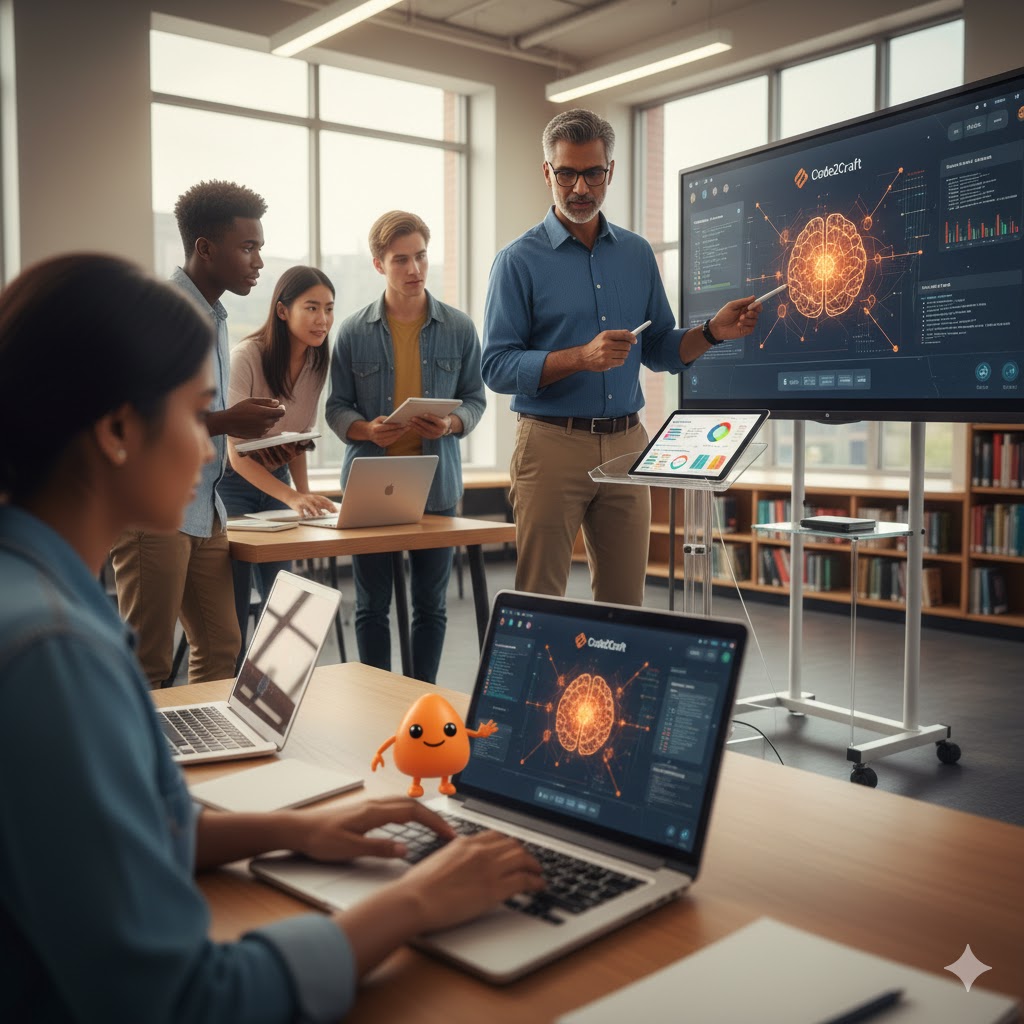
Artificial Intelligence is entering classrooms, universities, and professional training environments at incredible speed. But the real opportunity is not in using AI to “produce more content”. The real opportunity is to use AI to improve how students think, reason, and reflect.
AI becomes most powerful when it is used as a learning partner, not a shortcut.
Today, AI can already help students:
- connect new information to their existing understanding
- explore ideas through guided dialogue
- receive immediate feedback on drafts, answers, or reflections
- learn at their own pace based on what they know and don’t know yet


“These are the same learning processes that excellent teachers already try to create — AI can simply make them more accessible, more personalized, and available anytime through phones, laptops, or tablets.”
The role of the educator changes as well. When AI takes care of basic feedback and routine explanation, teachers gain more time to address deeper challenges: critical thinking, mindset, motivation, metacognition, creativity, collaboration — the human side of learning.
The future of AI in education is not about replacing teachers.
It is about freeing teachers from repetitive tasks so they can focus on what humans do best:
support curiosity, deep understanding, and meaningful learning.
AI, used correctly, is not about “answering questions” — it is about transforming students into independent thinkers who question, analyze, and build knowledge for themselves.
AI is now transforming education into a more personalized and meaningful learning experience. Instead of simply consuming information, students can interact with intelligent tools that guide their thinking, clarify misunderstandings, and adapt explanations based on their current level. At the same time, teachers gain more time to focus on critical thinking, creativity, and human connection. AI is not replacing educators — it is supporting them. The future of learning is a collaboration between human expertise and smart technologies working together.
Rabih E. Kahaleh
Author
